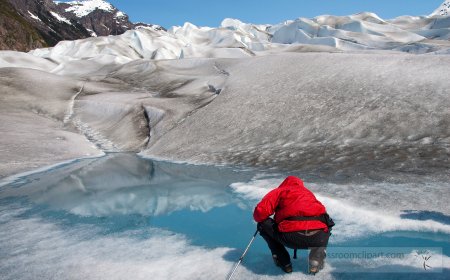Aquifers Explained for Students | Water Science Guide
Discover what aquifers are how they store groundwater and why they are vital for drinking water farming and healthy rivers in this clear guide for students
🌟 Introduction
Aquifers are natural underground layers of rock, sand, or gravel that hold and move groundwater. Think of them as giant sponges beneath our feet. Water from rain and melting snow seeps down through soil and rock until it reaches these layers, where it fills tiny spaces and cracks. Communities all over the world depend on aquifers for clean drinking water, and farmers rely on them to irrigate crops. Aquifers also feed springs, streams, and rivers, especially during dry seasons. Because aquifers refill slowly, understanding how they work helps us use water wisely and protect this hidden but essential resource.
🔍 Understanding Aquifers
An aquifer is a water-bearing layer of rock or sediment that can store and transmit groundwater. Water enters an aquifer through recharge-when precipitation soaks into the ground and travels downward.
-
Unconfined aquifers have a top surface called the water table and are recharged directly by rain and snow.
-
Confined aquifers lie below a layer of less-permeable rock or clay, which can trap water under pressure.Wells drilled into aquifers can bring water to the surface for homes, schools, and farms.
🌍 Why Aquifers Matter (with examples)
Aquifers matter because they:
-
Provide drinking water for billions of people worldwide through community wells and springs.
-
Support agriculture, supplying steady irrigation water during dry periods.
-
Stabilize ecosystems, releasing groundwater to streams and wetlands so fish, birds, and plants survive droughts.
-
Buffer drought, storing water in wet times and releasing it slowly later.
🧪 Everyday Examples
-
Well water at home: Many rural homes get tap water from a well drilled into a local aquifer.
-
City supplies: Some cities blend river water with groundwater from nearby aquifers to meet demand.
-
Springs and streams: A clear spring bubbling from a hillside is often an aquifer naturally reaching the surface.
-
School gardens: An irrigation pump that waters a school garden may draw from a shallow unconfined aquifer.
✨ Interesting Facts
-
Some confined aquifers are under pressure strong enough to make artesian wells flow without pumping.
-
Aquifers can span huge areas; the Ogallala Aquifer underlies parts of eight U.S. states.
-
Water may travel very slowly underground-sometimes only a few feet per year-so pollution can persist for decades.
📌 Key Takeaways
-
Aquifers are underground layers that store and move groundwater.
-
They supply drinking water, irrigation, and support ecosystems year-round.
-
Protecting recharge areas and preventing pollution keeps aquifer water clean and dependable.
🐾 Kid-Friendly Summary
Aquifers are like big sponges under the ground that hold fresh water. We pump this water up for drinking and farming, and it also helps streams flow when it does not rain. If we keep aquifers clean and let rain soak into the ground, we will have healthy water for people, plants, and animals.
📚 Vocabulary Words
-
Aquifer: Underground layer of rock or sediment that holds and moves groundwater.
-
Groundwater: Water stored in spaces and cracks below Earth's surface.
-
Recharge: Water from rain or snow that soaks into the ground to refill an aquifer.
-
Water Table: The top of the groundwater in an unconfined aquifer.
-
Confined Aquifer: Aquifer trapped under a less-permeable layer, often under pressure.
-
Permeability: How easily water can flow through rock, sand, or soil.
-
Artesian Well: A well that flows naturally because water is under pressure.
-
Well: A hole drilled or dug to bring groundwater to the surface.
Interactive Quiz: Aquifers
Instructions: Choose the best answer. Answers are listed at the end.
-
What is an aquifer?
A) A man-made water tank
B) An underground layer that stores and moves groundwater
C) A type of ocean current
D) A cloud that produces rain -
How does an aquifer recharge?
A) From ocean tides
B) From melting metal
C) From rain and snow soaking into the ground
D) From river dams only -
Which aquifer has a water table open to the surface?
A) Confined aquifer
B) Unconfined aquifer
C) Saltwater aquifer
D) Cloud aquifer -
What can create a flowing artesian well?
A) Strong winds
B) Water under pressure in a confined aquifer
C) A tall water tower
D) A frozen river -
Why are aquifers important to communities?
A) They make mountains taller
B) They provide groundwater for drinking and irrigation
C) They keep the ocean salty
D) They create thunderstorms



















































